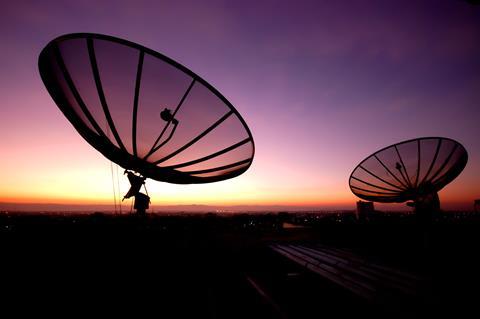Satellite has a vital role to play in the distribution of UHD programming, especially the delivery of high-value live content to large audiences.
The rise of streaming and growth in popularity of OTT platforms has led some to point towards the death of linear TV and in turn satellite distribution.

However, as with traditional TV, satellite is far from dead, with observers pointing to an important role to play particularly in reaching vast geographical areas.
Indeed, the widescale penetration of satellite delivery remains one of its strongest selling points as well as its efficiency and low-latency.
But as UHD grows in popularity – particularly for sport and live events - what will its role be in delivering high resolution content?
Ultra-high definition (UHD) 4K devices are set to become mainstream, accounting for nearly 50% of all TVs shipped worldwide by the years end according to statistics from Futuresource Consulting, while IHS Markit predict this figure to grow to 47.9 million by 2021. And satellite operator SES expects UHD screens to be in every third home in the US and every sixth home in Europe by the end of this year.
“Satellite is best placed for large scale multicast delivery,” Toby Holleran Senior Analyst at Ampere told IBC365, “especially for high-demand live events such as sports competitions.
“If 10 million people wanted to tune into a World Cup game in 4K, even with IP delivery costs decreasing, this would still be the most cost-effective method, as additional viewers incur no additional cost.
“There is no strain on a content delivery network from satellite delivery, watching such a game has far less risk of latency, lag or even outages than when viewed over an internet connection.”

Futuresource Media and Entertainment Market Analyst Tristan Veale told IBC365 at the end of June 2018 there were 125 active UHD channels with 52 of those delivered via satellite.
He says: “Moving forward we expect to see further proliferation of this, primarily driven by premium sports but increasingly other genres including movies and entertainment and by the end of 2018 total channels worldwide with reach 144.”
According to satellite operator SES there are more than 100 channels broadcasting in UHD via satellite who is also the largest operator carrying the most HD channels at 2,700 and 50 UHD channels globally.
UHD content of course requires greater bandwidth than broadcasting in SD (standard definition) or HD (high definition). Satellite distribution plays a vital role in ensuring the delivery of high-demand live sports and entertainment is successful.
Holleran adds over-the-top (OTT) distribution is best placed to serve 4K distribution for thematic channels with lower viewership.
“A UHD channel uses around four times more transponder space than its HD counterpart, and its cost will scale accordingly.
“If the UHD broadcast was desired at a higher frame rate - particularly important in fast-paced sports competitions - this will require even more throughput and could end up using the equivalent space to more than four HD channels and even more SD channels as a result.”

Newtec Market Director of Broadcast Hans Massart told IBC365: “Satellite offers the required bandwidth, reach and quality required to make UHD a mass-market service.
“It also has the capability to deliver UHD direct-to-home as well as provide it for retransmission purposes on other platforms such as transmission from cable headends or DTT towers.”
Massart says the implementation of DVB-S2X and technology such as High Efficiency Video Coding (HEVC) enables broadcasters, satellite operators and service providers to become more efficient as the uptake of UHD gathers pace.
He says: “There is nothing you cannot do on a satellite network that is possible on a terrestrial network in terms of functionality and applications.
“The satellite return channel, as provided by a VSAT network such as Newtec Dialog, can be used for Content Distribution Network (CDN) analytics feedback as well as support of a centralised Digital Rights Management (DRM).”

Meanwhile, V-Nova Senior Vice President and Marketing Fabio Murra says that satellite remains a powerful distribution method for tier one operators with large audiences.
“The well-established worldwide satellite infrastructure provides a reliable and robust way to distribute content particularly for large-scale events to large audiences and more so when other IP infrastructure is perhaps not available in certain territories.”
Murra explains the fixed costs of satellite distribution are very high which ultimately means the relevance remains with large organisation with a significant subscriber base for those with dedicated set top boxes for playback.
He says: “The robust quality of satellite services achievable to a mass market is important. The cost of bandwidth on satellite transponders is significant so the potential benefits to enabling profitable UHD services are vast.”
With a focus on providing next-generation compression for primary broadcast distribution, V-Nova aims to enable the provision of UHD feeds between production and broadcasters at lower bitrates than existing solutions – as little as 8Mbps for UHD.
























No comments yet